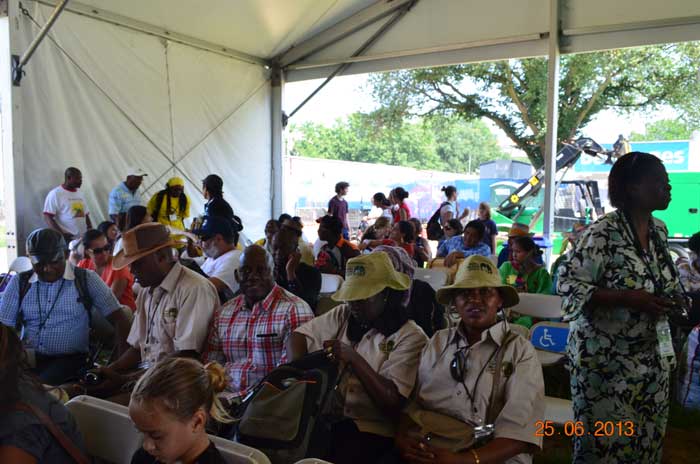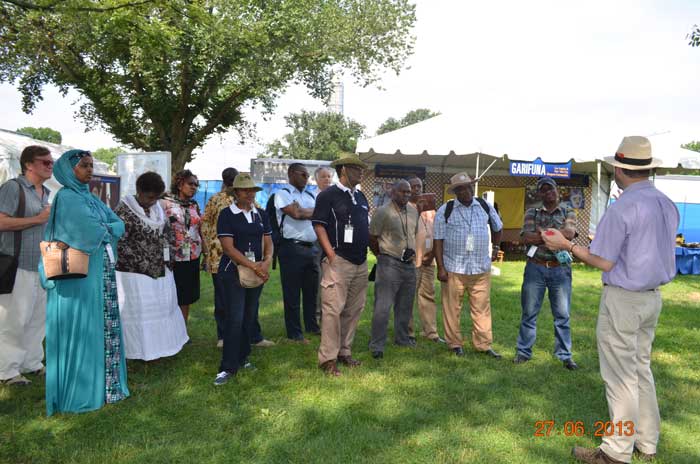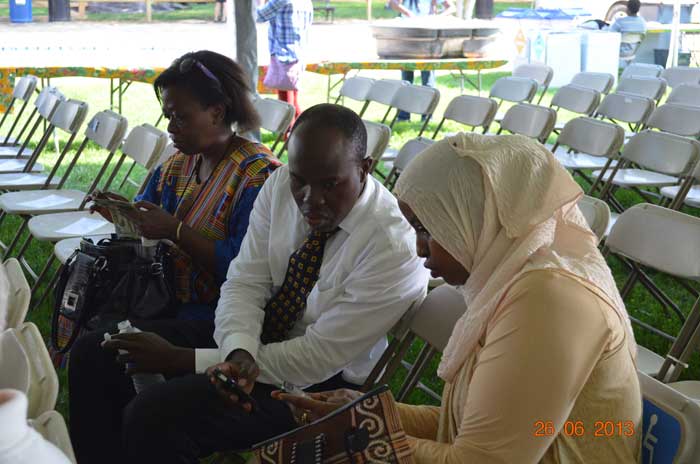Kenya Prepares for 2014 Smithsonian Spotlight

The last vestiges of the 2013 Smithsonian Folklife Festival have been removed from the Mall, but the long-term planning required to mount next year’s Festival is already well under way.
As the focus of one of the 2014 Festival programs, Kenya sent a delegation of nearly twenty people to Washington, DC, to observe the 2013 Festival and meet with Smithsonian representatives as well as officers from the Kenyan Embassy, State Department, and other governmental agencies.
With backgrounds ranging from wildlife management to global trade, members of this delegation investigated opportunities to highlight Kenyan culture, enhance connections with the Smithsonian and other US organizations and firms, and increase American tourism and trade.
But their mission extends beyond the promotion of modern Kenyan culture. They plan to promote Kenya as a cradle of humankind. As Mary Ombara, acting director of public communications at the Ministry of Information and Communications, said, “We want to tell the world that everybody is a Kenyan, because that’s where everybody originated from.”
In addition to being named a Festival program, Kenya will be a 2014 focus area across the Smithsonian, with involvement spanning from the National Zoological Park to several museums bordering the Festival site on the Mall, including the National Museum of African Art and the National Museum of Natural History. Festival participation makes possible unprecedented opportunities for collaboration, planning, and development.
In addition to increasing the general public’s interest and knowledge about Kenya in ways that could boost tourism to Kenya, the 2014 Festival Marketplace will offer a wide array of authentic Kenyan crafts and other products that could have a beneficial impact on Kenyan exports and trade opportunities, too.
Representing Kenya’s diversity will constitute the most exciting challenge of curating a Festival program. “It’s really unbelievable how rich Kenyan culture is,” Ombara said. “We have about forty-two communities, each with distinct cultures, language, and stories. . . but I think above all, we want to meet with the rest of the world, exchange ideas, see how better to develop our country, see how we are able to mix with cultures around the world.”
While Kenya is perhaps best known in the public’s mind for its wildlife, the 2014 Festival also will provide an opportunity for the public to learn directly from Kenyans about some of the realities of living and working with wildlife in East Africa. For example, as part of their ongoing anti-poaching initiatives, rangers who work in the national parks protecting wildlife will be among the Kenyan participants telling their stories on the Festival grounds.
Food and dance will comprise two of the expected highlights of the 2014 Festival program. Chapati (a flatbread similar to naan), ugali (a semi-hard flour cake), and nyama choma (roasted meats) are considered among the must-eats, and Ombara emphasized, “Food is an area where we can’t go wrong.”
In addition to learning about Kenyan culture, wildlife, and food, visitors should expect to get down with Kenyan dancers and musicians. As Ombara said, “The one thing about Kenyan dances is that they are very participatory. You join in because the beats are so strong. You won’t just sit and listen. You must join.”









Emily Bulger was a web production intern with the Smithsonian Center for Folklife and Cultural Heritage during the 2013 Folklife Festival. She is a master’s student at the University of Texas at Austin School of Information, where she specializes in museum studies and archives. She can often be found tinkering with the Internet and taking meandering walks with no destination in mind.

